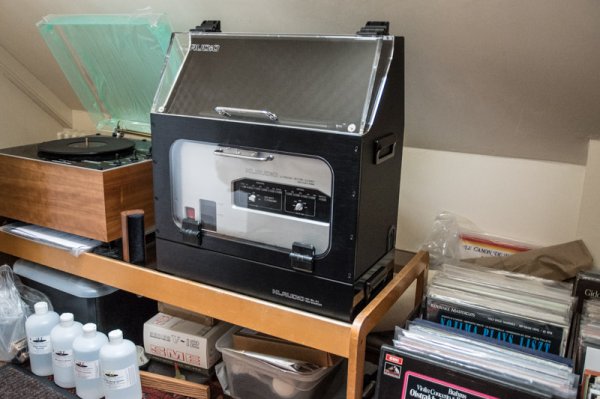The newest addition to my vinyl routine: a KL Audio RCM and Silencer case. I will report later about its efficacy.
View attachment 32763
Hi, what does this do?
The newest addition to my vinyl routine: a KL Audio RCM and Silencer case. I will report later about its efficacy.
View attachment 32763
Hi, what does this do?
so I plan to clean LPs while doing work on the computer.
I expect Peter to determine the ultimate number of cleaning cycles per LP based on the thickness of the vinyl.
Hi, congratulations to your new record cleaner. Personally I believe that ultrasonic cleaners are the most effective type and I'm curious to read about your thoughts of your comparison to your old cleaning machine.
Out of interest: did you compare it to other ultrasonic record cleaners before you bought it, e.g. the Gläss Vinyl Cleaner?
The newest addition to my vinyl routine: a KL Audio RCM and Silencer case. I will report later about its efficacy.
View attachment 32763
Nice Peter. When you get a chance, could you measure the noise level when using the silencer? Just curious how well it works.
I know the Klaudio RCM works very well, and is very convenient to use. If I had not already owned an Audio Desk I would have purchased a Klaudio when it first came out.
Thanks Sean. Here are the results with my Radio Shack SPL meter, dB C weighted:
1. Wash cycle - 70 dB, with Silencer, 52 dB
2. Dry cycle - 71 dB, with Silencer, 55 dB
The interesting thing is that the wash cycle sounds much louder but it is a higher frequency noise. I am currently using the 5 min cycle for dirty records. The noise even with the Silencer, is somewhat annoying because of the high frequencies to which I am sensitive. (Kind of fatiguing like bad digital, if you know what I mean). I had thought I could clean a batch of 10 LPs while reading/working at the computer, but I'm now not so sure. I want to protect these ears and high frequencies irritate me. Unfortunately, I may have to move the machine to a different location, further away from my desk. The dry cycle is fine, just a mild fan noise.
I am more optimistic about the audible results of the cleaning process. The Silencer is an absolute necessity if you are in the same room as the RCM for any amount of time, IMO.
I have always liked those Mágico speakers, also liked the small designs from them - congrats for a great system and a nicer setup.

Dear Peter,
i also have this machine and i was more impressive on better quality than for his clean.
He clean very well but in some my records even if with 3/4 wash i listen always some pops and ticks,
but is incredible how the record sound better in every parameter
I listened again to Sonny Rollins, Way Out West....I remember when I first got this LP. It was clearly an early stereo recording and the three musicians were placed precisely at the left and right channel speakers. I loved the music but was never really impressed with the imaging, soundstage, palpability, or depth and 3D quality of the sound. The recording lacked all sense of Presence. It was flat and not fully involving...
....The Sonny Rollins LP has been transformed by some combination of all of these small improvements. Presence is now incredible, the sound no longer comes out of the speakers but is spread out in front of me. It is palpable, dimensional, there is depth and more realistic scale. I can imagine the musicians in space in the room. They are no longer small and localized at the speakers. They are now layered and Sonny moves a bit around the mic. They are between and behind the speakers and the speakers are no longer the source of the sound...
| Steve Williams Site Founder | Site Owner | Administrator | Ron Resnick Site Owner | Administrator | Julian (The Fixer) Website Build | Marketing Managersing |

